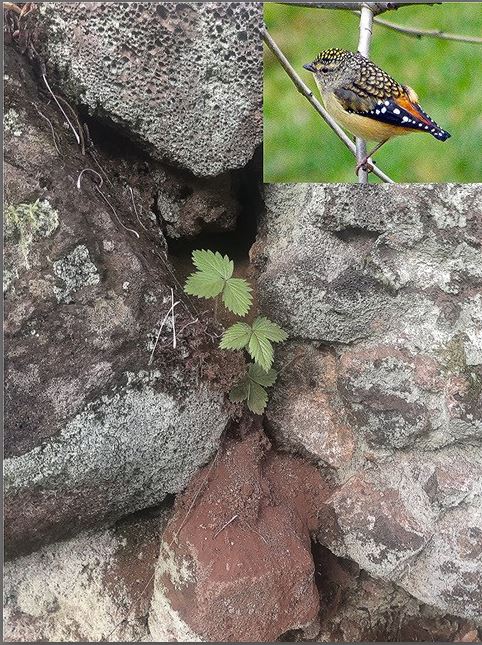November 28th, 2023Glen, about the house…

Mini minder – the spotted pardalote
Having been previously rudely dumped from their nesting place in under the corrugated iron roof of our house by larger, rowdy striated pardalotes, our beloved ‘spotties’ have returned for the breeding season.
This time it’s to a more traditional pardalote nursery – at the end of the newly dug, metre-long tunnel between the rocks of our garden wall.
So, we will soon be delighted by the sight and sounds of two beautiful avian families feeding on the insect pests of our eucalypts and other native plants.
Facelift for a centuries-old favourite
Since medieval times lavender plants have been grown for their aroma and supposed medical benefits. Lavender certainly featured in their perfumes. Dried flower heads are still being sewn into muslin sachets and placed in drawers to protect clothing from moths etc.
Nothing had changed much until recent years when clever botanists began to hybridise lavenders of every form to produce bigger, better flowers and add a rainbow of colours to the drab grey/violet palette of the three main garden varieties. So now each variety comes in a colour range from white to deep purple. These are:
English lavender (lavandula angustifolia) Actually native to the Mediterranean, its small flowers attract bees and butterflies. It’s commercially grown for its high-quality lavender oil and grows to 90cm with narrow grey-green foliage and flowers available in blue, purple, white and pink. It flowers from early to mid-summer.
French lavender (lavandula dentata) Also called fringed lavender, it is actually native to Spain. It is not as fragrant as other lavenders but its leaves do have a rich lavender-rosemary scent. Flowering from early summer through to autumn. In the garden, plant it as low, formal hedging in the same way you use box or as sculptural mounds on a bank. It’s great in coastal areas.
Spanish lavender (lavandula stoechas) This grows up to 60cm tall with deep purple, deep pink or white flowers, topped with upright tassels. It flowers from mid-spring to late summer.
As natives of the Mediterranean, lavenders are well suited to our growing conditions, and like their summers hot and dry, and winters cool. Only English lavender dislikes humidity, but other lavenders will happily grow in areas of mild humidity. They thrive best in well-drained, organically rich soil. So before planting, enrich the soil with compost, manure or organic fertiliser.
Lavenders are drought-hardy plants, so once established they only need the occasional deep soak during dry spells, to help them through the warmer months. Just don’t overwater – they don’t like wet feet.
Lavenders will thrive in a container as long as these conditions are met. The pot must have a good drainage hole and the soil needs to be well draining. The plant needs to receive as much sunlight as possible. You should water the plant thoroughly once or twice a week – depending on the weather.
Feed them regularly through the flowering season with a liquid fertiliser. After flowering, feed them with a general purpose, slow-release fertiliser.
Remove spent flowers and trim lightly after flowering. Once plants are established and the flowers spent, trim them back by up to one-third. This will rejuvenate the plants to encourage new growth.
Lavenders will make perfect low, compact hedges to border paths, lawns etc, their compact foliage and growth being enhanced at times of flowering, and the perfume enhancing the outdoors for much of the year.
Because of the variance in growth habit and height between the various forms it would be best to keep to a single variety in each stretch of the hedge. Got a gardening query? Email glenzgarden@gmail.com









